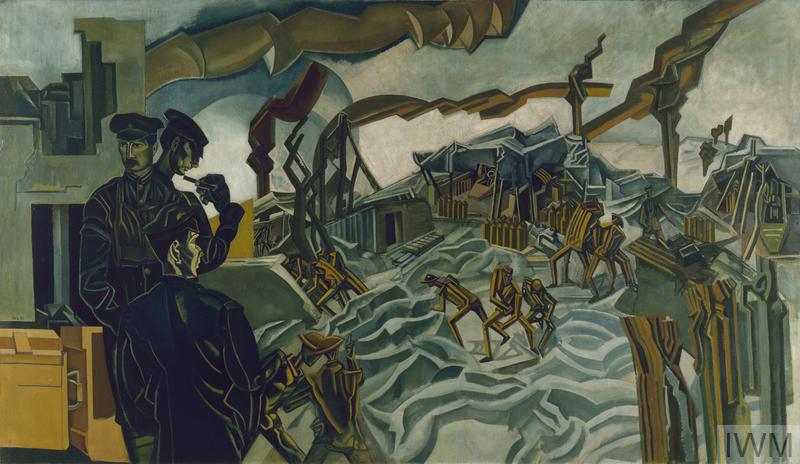The war art schemes developed by the British government during the First World War were an unprecedented act of government sponsorship of the arts. As the schemes grew, they ultimately explored every aspect of conflict, from the violence of industrial warfare to hastened social and economic change at home.
The first scheme was initiated in July 1916 by Wellington House, a government propaganda department. The intention was to provide eyewitness images to illustrate propaganda publications. In 1917 Wellington House merged with the newly-established Department of Information. Amongst the artists commissioned at this stage were William Orpen, Paul Nash and C R W Nevinson.

One of the leading society portrait painters of his day, Sargent was commissioned to contribute the central painting for the Hall of Remembrance. Gassed is based on the scene at a dressing station as it took in casualties from a mustard gas attack on the Western Front in August 1918.
IWM was founded on 5 March 1917 and was charged with collecting a wide variety of material documenting the war, including art. In addition to acquiring works produced under the Department of Information scheme, the museum commissioned its own artists.
In February 1918 the Department of Information became the Ministry of Information and established the British War Memorials Committee. This committee widened the scope of the war art scheme considerably by planning a Hall of Remembrance devoted to 'fighting subjects, home subjects and the war at sea and in the air'.
This was to be a record and a memorial to the Great War through paintings commissioned from the best and, on occasion, the most avant-garde British artists of the day, including Percy Wyndham Lewis, Stanley Spencer and John Singer Sargent. However, because of lack of funding after the war, the Hall of Remembrance was never built, and the collection of paintings was given to the Imperial War Museum.
We are Making a New World by Paul Nash

Following a successful exhibition of his war drawings in London in July 1917, Nash was commissioned as an official war artist. This work is one of the most memorable images of the First World War.





